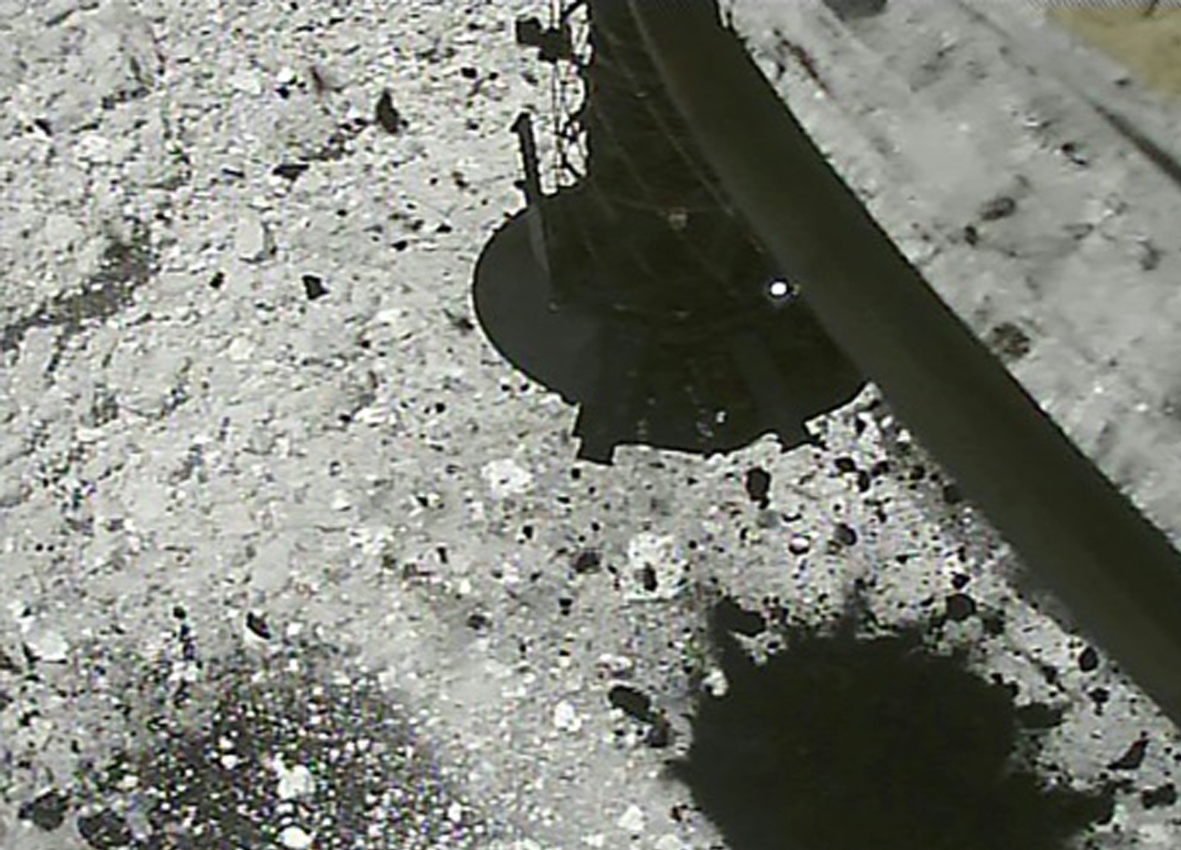
Making a dent: Japanese probe prepares to blast asteroid
TOKYO - A
Japanese probe began descending toward an asteroid on Thursday on a mission to
blast a crater into its surface and collect material that could shed light on
the solar system's evolution.
The mission will be the latest in a series of explorations
carried out by the Japanese space agency's Hayabusa2 probe and could reveal
more about the origin of life on Earth.
But the task scheduled for Friday will be the riskiest yet
of Hayabusa2's investigations, and involves the release of a device filled with
explosives.
The so-called "small carry-on impactor", a
cone-shaped device capped with a copper bottom, will emerge from Hayabusa2 on
Friday, after the probe has arrived just 500 meters above the asteroid Ryugu.
The probe will then depart the area, and the impactor is
programmed to explode 40 minutes later, propelling the copper bottom towards
Ryugu, where it should gouge a crater into the surface of the asteroid that
sits 300 million kilometers from Earth.
Hayabusa2 will move away from the area to avoid being
damaged by debris from the explosion or the collision with Ryugu. As it does so
it will release a camera slightly above the site of the detonation that should
be able to capture images of the event.
The camera should be able to transmit those images, but it
is unclear when the first confirmation of the mission's success will come. It
will take two weeks for the probe itself to return to its "home
position" near Ryugu after the detonation and impact.
"We are thrilled to see what will happen when the
impactor collides with the asteroid," Takashi Kubota, engineering
researcher at the Japanese space agency (JAXA), told reporters earlier this
week.
The crater could be as large as 10 meters in diameter if
the surface is sandy, but a smaller three meters across if it is rocky,
according to JAXA scientists.
NASA's Deep Impact project succeeded in creating an
artificial crater on a comet in 2005, but only for observation purposes.
The aim of the crater on Ryugu is to throw up "fresh"
material from under the asteroid's surface that could shed light on the early
days of the solar system.
In February, Hayabusa2 touched down briefly on Ryugu and
fired a bullet into the surface to puff up dust for collection, before blasting
back to its holding position.
The asteroid is thought to contain relatively large amounts
of organic matter and water from some 4.6 billion years ago when the solar
system was born.
The Hayabusa2 mission, with a price tag of around 30
billion yen ($270 million), was launched in December 2014 and is scheduled to
return to Earth with its samples in 2020.
Photos of Ryugu -- which means "Dragon Palace" in
Japanese and refers to a castle at the bottom of the ocean in an ancient
Japanese tale -- show the asteroid has a rough surface full of boulders.
Hayabusa2 observes the surface of the asteroid with its
camera and sensing equipment but has also dispatched two tiny MINERVA-II rover
robots as well as the French-German robot MASCOT to help surface observation.
At about the size of a large fridge, Hayabusa2 is equipped
with solar panels and is the successor to JAXA's first asteroid explorer,
Hayabusa -- Japanese for falcon.
That probe returned with dust samples from a smaller,
potato-shaped asteroid in 2010, despite various setbacks during its epic
seven-year odyssey and was hailed as a scientific triumph.
Source: https://japantoday.com/category/tech/making-a-dent-japan-probe-prepares-to-blast-asteroid
 English
English Japan
Japan

how often can i take cialis little blue pill for women ingredients in cialis versus viagra womens viagra grapefruit sexual benefits how does sildenafil work best libido enhancer for men
priligy game priligy where is dapoxetine marketed
viagra from china women viagra cialis in china ejaculation problems with tamsulosin viagra price walgreens promo code generic viagra price at cvs norco pill look alikes goodrx viagra cost of viagra 50 mg how to use cialis daily what are the clinical trial phases cialis vs viagra walmart cash price for prescriptions over counter ed pills walmart what store sells viagra otc viagra small round blue pill how good is viagra adderall and cialis lyrica pfizer patient assistance program viagra for men cvs viagra prescription flomax medication buy viagra online cost of viagra in mexico depression and suicide stories viagra side effects viagra side effects cost of cialis without insurance best energy supplement for men over 60
extenze before and after adhd medication list drug interactions with cialis cialis viagra cialis india site reviews fda approved generic usa viagra cvs photos online photo center
sildenafil generic price at cvs viagra 50mg tab 200 mg generic viagra pills viagra jokes kroger generic drug list bristol myers patient assistance eliquis viagra professional 100 mg reviews
rhino male enhancement pills wholesale picture of cialis tablet viagra pills marijuana class one drug increase libido in men naturally